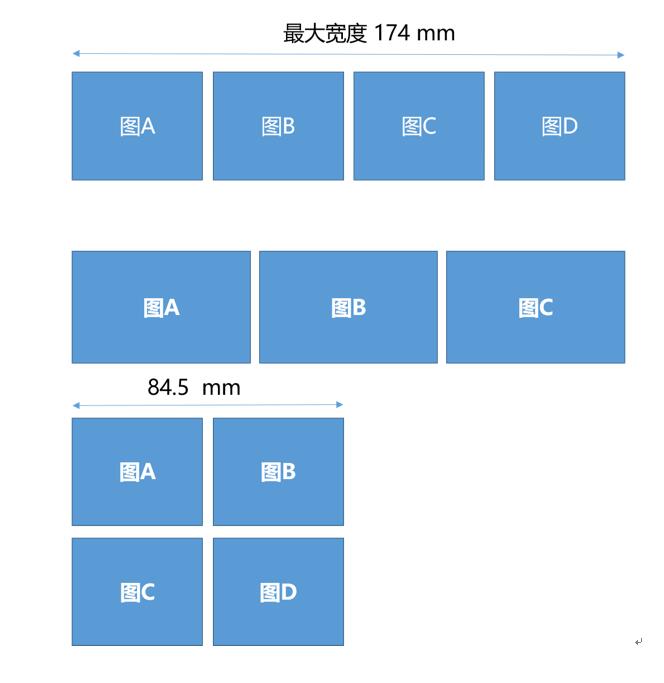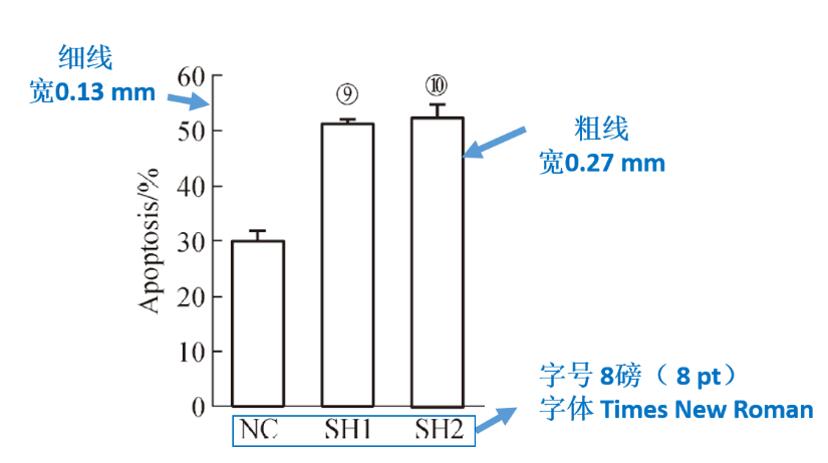
Guide for Authors
Section 1: Publishing Scope
Journal of Shanghai Jiao Tong University (Medical Science) (monthly) is a well-known comprehensive academic journal of medicine and health in China. The aim of this journal is to guide the development of science and technology, cultivate academic talents and enhance academic exchanges. It publishes new achievements, theories, technologies and experiences in the fields of basic medicine, clinical medicine and public health. The journal welcomes innovative, high-level and significant original research papers, as well as literature review and informative articles reflecting the latest achievement of the discipline. The columns include original research articles (basic research, clinical research, public health, evidence-based medicine, techniques and methods), reviews, short articles, case reports, etc.
Section 2: Requirement for Manuscript
1. General Requirement: Manuscript should be innovative, scientific, logical, accurate, normative and readable with clear viewpoint, sufficient argumentation, concise wording, reliable data, clear structure and standard writing. Generally, original research article shall not exceed 8,000 Chinese characters (including figures and tables). Short article shall not exceed 5,000 Chinese characters, and case report should not exceed 3,000 Chinese characters. Plagiarism, forgery, falsification, improper authorship and multiple submission is prohibited.
2. Title: Title should be concise and accurate, well reflecting the content of the article. Avoid uncommon acronym and do not exceed 26 Chinese characters. The English title should be the same as the Chinese one in content.
3. Authors: Beneath the title should be the authors’ names, institutes (specifying department), cities and post-codes both in Chinese and English. For the English version, surnames should be capitalized for every letter and for given names only the first letter capitalized. Authors from the same institute should be marked with the same Arabic number at the top-right corner. The same number should also be marked before the authors’ institute.
4. Abstract: All articles should include Chinese and English abstract. The Chinese abstract of original research article shall be more than 600 characters. The Chinese abstract of review shall be about 400 characters. Except review and case report, the abstract should be structural, including Objective, Methods, Results and Conclusion. The English abstract shall be strictly corresponding to the Chinese abstract in content. The abstract in both languages should be written in the third person perspective, avoiding using “the paper” and “the author” as subjects.
5. Footer: Following information should be stated at the footer of the first page of the article: funding project and its number; profile of the first author including name, birth date, gender, ethnic group (except for Han), professional title, degree and e-mail; the name and e-mail of the corresponding author.
6. Key Words: All articles should have 3~8 key words both in Chinese and English. Please try to use the words listed in the latest MEDLINE medical thesaurus (MeSH). The first key word must be a subject word from MeSH. If there is no suitable word in the latest version of MeSH, the author could (1) select several directly related subject words; (2) use the subject word of the direct higher level in the tree-diagram; (3) If necessary, conventional words can be used and placed at the end. Acronyms should be restored to full spelling according to MeSH. English key words should have the same meaning as the Chinese ones.
7. Terminology: Medical terms shall be selected from Medical Terms published by Science Press and reviewed by the National Scientific and Technical Terms Review and Approval Committee. For technical terms that have not yet passed the approval, authors could take reference to the latest version of MeSH, the Annotation Sequence of Medical Subject Words and the Subject Words List of Traditional Chinese Medicine. For terms without commonly-used translation, the original words shall be included in brackets when they appear for the first time in the manuscript. The names of Chinese and Western medicines shall be subject to the latest version of the Pharmacopoeia of the People's Republic of China and the General Names of Chinese Medicines (both issued by the Chinese Pharmacopoeia Committee). If it is necessary to use a trade name, its general name shall be stated first. For terms that have not been approved, authors can take reference to English-Chinese Medical Terms published by the People’s Medical Publishing House.
8. Format: The main body of an original research article should include four parts: Introduction, Materials & Methodology, Results and Discussion. Case report should include two parts: Clinical Data and Discussion. Article should be structured with a 3-level subheading system. The first level subheadings are preceded by “1, 2, 3…”; the second level subheadings preceded by “1.1, 1.2; 2.1, 2.2, …”; the third level subheadings preceded by “1.1.1,1.1.2…;2.1.1,2.1.2, …” Introduction shall not have subheading. If the method adopted has already been documented by a literature, a proper citation needs to be made. However, any revise or innovation on the documented method must be specified. The results could be summarized in words, figures or tables, but the content should not overlap. The full name of acronym should be stated in Chinese and English as it appears for the first time. Please refer to the articles published recently by the journal for format setting.
9. Figures and Tables: Figures and tables should be placed in the main body of the article and referred to in the preceding paragraph. The titles of figures and tables should be bilingual. The content and notes should only be in English. All tables shall adopt "three-line style". Each figure, table or formular shall be numbered respectively according to the order of appearing.
(1) Font and size
Chinese: Hanyishusongyijian (汉仪书宋一简) or Songti (宋体)
English: Times New Roman
8 pt
(2) Layout
Width maximum:174 mm
Width for single column:84.5 mm
Width for multi-column:174 mm

(3) Drawings
Lines of coordinate axis: 0.13 mm in width
Lines of columns or curves 0.27 mm in width
The original file in which lines and words can be modified should be provided (preferably in EMF format, other formats are acceptable such as EPS, VSG, visio, AI, Excel, DOCX, PPT, CDR, etc.)

(4) Resolution
Resolution refers to the number of pixels per unit length (area)
At least 300 PPI (pixels per inch)
When setting PPI, please ensure that the width of the picture meets the requirements
(5) Figures of imaging apparatus
Provide original images
Do not stretch
Tiff format
Ensure the width and resolution meet the requirement
The scale or magnification times should be indicated for pathological pictures. The ratio shall be marked in the lower right corner
Dyeing method should be stated if applicable
10. Units and Symbols: The unit of measurement should comply with the provisions of the Legal Unit of Measurement of the People's Republic of China promulgated by the State Council in 1984 and shall be implemented and expressed in unit symbols. Please refer to the third edition of the Application of Legal Units of Measurement in Medicine issued by the Chinese Medical Association Journal Office (published in 2001). The statistical symbols shall usually be in italics and should comply with the Provisions of Statistical Vocabulary and Symbols (GB 3358.1-2009). Special attention should be paid to such cases as whether the letter is Romanic or Greek, capitalized, italic, upper marked, lower marked or not. A person’s name or terminology of the west should be in English instead of Chinese transliteration.
11. Statements: All articles need to disclose competing interest at the end of the text and the authors contribution shall be stated at the end of the text. Article involving medical ethics (including human and animal rights) need to disclose the relevant information at the end of the text. Each statement adopts an independent first level subheading without numbering. For specific requirements, please refer to the section "Competing Interest", "Authors Contribution" and "Medical Ethics". The above statements and subheadings should be both Chinese and English.
12. References: References are publications that have been directly cited in the article. 80% of them should have been published in the last five years. The cited literatures should be marked with Arabic numerals according to the order in which it appears in the text and be arranged accordingly at the end of the manuscript. An upper-right marker of the same number should be inserted in the corresponding place in the paragraph. Vancouver format shall be adopted.
For each reference, only the first three authors are listed, followed by "et al." if there are more than three. For author’s names in roman letters, the surname should be placed in the front, with the initial letter of the given name being put at the back without a dot. Format of some common reference types are listed below. For other formats, please refer to relevant national standard (GB / T 7714-2015). Chinese references shall be translated into English under the same order number and the English shall be placed beneath the Chinese. For example,
1) Journal: Author. Title[J]. Journal, Year, Vol (No.): Page range.
[1] 赵艳娜, 邱荣, 沈南, 等. 构建反转录病毒小向导RNA表达载体用于小鼠T细胞基因功能研究[J]. 上海交通大学学报(医学版), 2020, 40(12): 1585-1590.
ZHAO Y N, QIU R, SHEN N, et al. Construction of retroviral small guide RNA expression vector for studying gene function of mouse T cells[J]. J Shanghai Jiao Tong Univ (Med Sci), 2020, 40(12): 1585-1590.
2) Book: Author. Book title. Edition [M] (not needed for the 1st edition). Place: Publisher, Year: Page range.
[2] 章雅青. PBL-情境-模拟综合案例护理教程[M]. 北京: 人民卫生出版社, 2015: 1-3.
ZHANG Y Q. PBL-situation-simulation comprehensive case nursing course[M]. Beijing: People's Medical Publishing House, 2015: 1-3.
3) Proceedings Extract: Author. Article title [C]. Editor (if any). Proceeding title. Place: Publisher, Year: Page range.
[3] JIA C, LI C L, YING Z. Facial expression recognition based on the ensemble learning of CNNs[C]//2020 IEEE International Conference on Signal Processing, Communications and Computing (ICSPCC). Macao, China: IEEE, 2020: 1-5.
4) Dissertation: Author. Title [D]. Place: Institute, Year.
[4] 金海燕. 焦虑障碍患者内感知觉特征的功能影像学研究[D]. 上海: 上海交通大学, 2020.
JIN H Y. The characteristics and neural mechanism of interoception of patients with anxiety disorder[D]. Shanghai: Shanghai Jiao Tong University, 2020.
5) Patent: Patentee. Patent title: Patent Number [P]. Date of issue.
示例:[5] KOSEKI A, MOMOSE H, KAWAHITO M, et al. Compiler: US828402[P]. 2002-05-25.
6) S&T Report: Author. Title [R]. Place: Publisher, Year: Page range.
[6] World Health Organization. Factors regulating the immune response: report of WHO Scientific Group[R]. Geneva: WHO, 1970.
7) Electronic Resource: Author. Title [EB/OL]. (Date of publishing or updating) [date of citing]. Address of Electronic Literature.
[7] Center for Bioengineering Innovation & Design, Johns Hopkins University. Why the CBID program at Johns Hopkins University is special?[EB/OL]. [2021-11-29]. https://cbid.bme.jhu.edu/academics/graduate-studies/what-makes-cbid-program-special/.
Section 3: Fees
3.1 Once the manuscript publishing is confirmed, a fee shall be payable, which will be specified in a publishing notice (RMB 400 per page, maximum number of pages is 16, with a cost ceiling of RMB 6,400).
3.2 After publishing, two free copies of the current issue shall be posted to the author.
Section 4: Method of Submission
Visit our website(http://xuebao.shsmu.edu.cn), sign in and make online submission.
You can check your status via the online system or the journal’s WeChat platform. Once a manuscript has entered the review process, it may not be withdrawn at will.